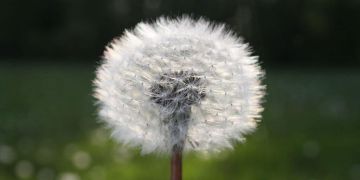Medicinal uses
Dandelion roots have long been largely used on the Continent, and the plant is cultivated largely in India as a remedy for liver complaints.
Daniel Mowrey PH.D, author of "The Scientific Validation of Herbal Medicine" states, "Dandelion heads the list of excellent foods for the liver." The herb has been used for centuries to treat jaundice and the yellowing of the skin that comes with liver dysfunction, cirrhosis, hepatitis and liver disease. Modern naturopathic physicians use dandelion to detoxify the liver and reduce the side effects of prescription medications.
But liver function isn't the only use of this nutritious plant. It is also used to treat infections, swelling, water retention, breast problems, gallbladder problems, pnuemonia and viruses. Studies have shown that dandelion stimulates bile flow and has a mild diuretic effect.
Properties
Dandelion is on the FDA's list of safe foods and is approved by the Council of Europe.
The chief constituents of Dandelion root are Taraxacin, acrystalline and Taraxacerin, an acrid resin, with Inulin (a sort of sugar which replaces starch in many of the Dandelion family, Compositae), gluten, gum and potash. It contains substantial levels of vitamins A, C, D, B-complex, iron, magnesium, zinc, potassium, manganese, choline, calcium and boron.
Diuretic, tonic and slightly aperient. It is a general stimulant to the system, but especially to the urinary organs, and is chiefly used in kidney and liver disorders.
Dandelion is not only official but is used in many patent medicines. Not being poisonous, quite big doses of its preparations may be taken. Its beneficial action is best obtained when combined with other agents.





